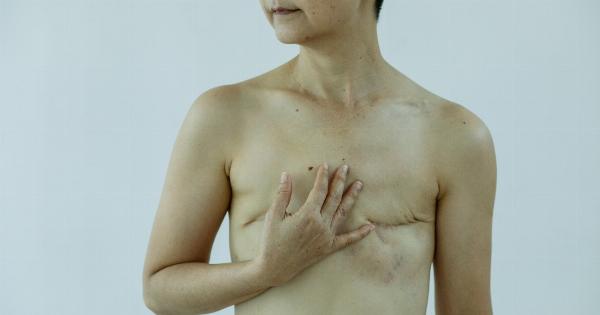Cancer has become one of the most significant health concerns worldwide. According to the World Health Organization, cancer contributes to about 9.6 million deaths globally each year.
Cancer is a disorder that results from the mutation of cells in the human body. It can occur in any part of the body, and its severity is determined by the stage at which the disease is diagnosed. Cancer is a complex health issue, and its causes depend on several factors, including genetics, lifestyle, and environment.
Amongst other regions in the world, Europe is likely to see a significant increase in cancer cases in the future, based on the current trends.
Incidence of Cancer in Europe
The cancer incidence rate in Europe shows considerable variation by region, with some areas having much higher rates than others.
According to the European Cancer Information System, the overall cancer incidence rate in Europe was 338 cases per 100,000 people in 2018. The incidence rate of cancer varies across the continent, with countries like Denmark and France recording the highest rates of 384 and 368 cases per 100,000 people, respectively.
On the other hand, countries like Moldova and Albania recorded the lowest rates of 184 and 202 cancer cases per 100,000 people, respectively, followed by Kosovo with 217 cases per 100,000 people.
Expected Increase in Cancer Cases in Europe
Europe is facing significant challenges when it comes to cancer treatment and management. The incidence of cancer in the region is on the rise, and this trend is expected to continue in the coming years.
The increase in cancer cases can be attributed to several factors, including an aging population and lifestyle choices. By 2035, the number of cancer cases in Europe is expected to increase by 24%, with a total of 4.5 million new cancer cases.
One of the leading causes of this expected increase is the aging population. According to the European Commission, Europe is one of the oldest regions globally, and the proportion of people aged 65 or above is expected to double in the next few decades.
As people age, their risk of developing cancer increases, and this age-related factor is likely to contribute to the higher incidence of cancer in Europe.
Lifestyle Factors Contributing to Increase in Cancer Incidence in Europe
Another principal driver of the high cancer incidence in Europe is lifestyle factors. Lifestyle habits such as smoking, excessive alcohol consumption, poor diet, and physical inactivity contribute significantly to cancer and other chronic diseases.
These behaviors and unhealthy habits increase the risk of developing cancer, and as a result, countries with a higher prevalence of risk factors like smoking and alcohol abuse have higher cancer incidence rates.
The European Union has been working on public health measures that seek to reduce these risk factors and promote healthier lifestyles.
Some of the implemented measures include placing higher taxes on tobacco products and working to reduce alcohol-related harm by enhancing the listing of health warnings on alcoholic products.
Tobacco Use in Europe and Cancer
Tobacco use is one of the leading causes of cancer in Europe, particularly lung cancer. Smoking increases the risk of developing various types of cancers, including lung, bladder, and stomach cancers.
In Europe, smoking is still a significant public health concern, and the EU continues to implement tobacco control policies aimed at reducing smoking prevalence. One such measure is the implementation of standardized packaging for tobacco products, which will make it less attractive to smokers.
Obesity in Europe and Cancer
Obesity is also a significant risk factor for developing cancer. Data shows that overweight and obesity contribute to around 3% of all malignancy cases worldwide.
In Europe, the prevalence of obesity has been increasing steadily in both adults and children. Obesity is associated with several types of cancers, including endometrial, liver, and kidney cancer.
Breast Cancer in Europe
Breast cancer is the most common cancer in women globally and is a major public health issue in Europe. Breast cancer incidence rates vary widely in the region, with some countries having higher incidence rates than others.
The highest rates of breast cancer are recorded in Belgium, France, and Luxembourg, while the lowest are recorded in Albania, Croatia, and Lithuania.
The Way Forward
Cancer is a complex and multifaceted health issue that the EU has been working to address. The European Commission has invested in research and innovation, with the aim of improving cancer treatment and management.
Several EU-funded projects have also been implemented to improve prevention, diagnosis, and treatment of cancer.
Large and long-term public health strategies are crucial in the fight against cancer and can help reduce the incidence of the disease. The EU will continue to implement measures aimed at improving cancer prevention, early detection and treatment.
Conclusion
The cancer incidence rate in Europe is projected to continue increasing in the coming years. Cancer treatment and management are becoming an increasingly challenging aspect of public health concerns in Europe.
The increase in cancer cases is attributed to several factors, including aging, obesity, tobacco use, and other lifestyle factors. The EU has been implementing various measures aimed at reducing the incidence of cancer in the region, such as investing in research and innovation, implementing the standardized packaging of tobacco products, and promoting healthier lifestyles.
It is expected that the EU’s efforts towards reducing cancer incidence will bear fruits in the future, leading to fewer cancer deaths and a better quality of life for people affected by cancer.
























